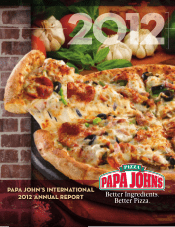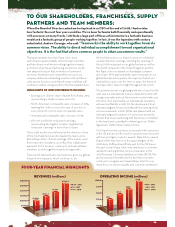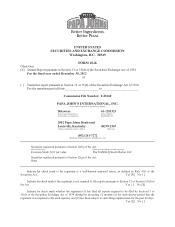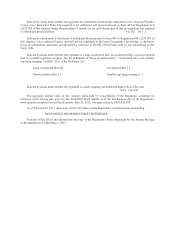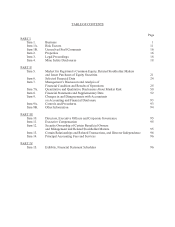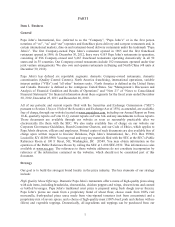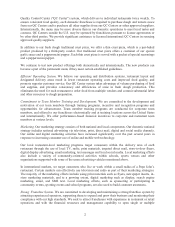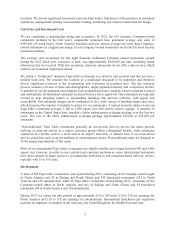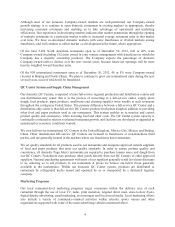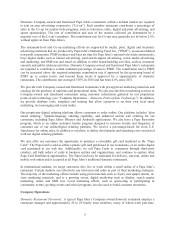Papa Johns 2012 Annual Report Download - page 10
Download and view the complete annual report
Please find page 10 of the 2012 Papa Johns annual report below. You can navigate through the pages in the report by either clicking on the pages listed below, or by using the keyword search tool below to find specific information within the annual report.4
Although most of our domestic Company-owned markets are well-penetrated, our Company-owned
growth strategy is to continue to open domestic restaurants in existing markets as appropriate, thereby
increasing consumer awareness and enabling us to take advantage of operational and marketing
efficiencies. Our experience in developing markets indicates that market penetration through the opening
of multiple restaurants in a particular market results in increased average restaurant sales in that market
over time. We have co-developed domestic markets with some franchisees or divided markets among
franchisees, and will continue to utilize market co-development in the future, where appropriate.
Of the total 3,204 North American restaurants open as of December 30, 2012, 648 or 20% were
Company-owned (including 182 units owned in joint venture arrangements with franchisees in which the
Company has a majority ownership position). The Company expects the percentage of domestic
Company-owned units to decline over the next several years, because future net openings will be more
heavily weighted toward franchise units.
Of the 959 international restaurants open as of December 30, 2012, 48 or 5% were Company-owned
(located in Beijing and North China). We plan to continue to grow our international units during the next
several years, most of which will be franchised.
QC Center System and Supply Chain Management
Our domestic QC Centers, comprised of nine full-service regional production and distribution centers and
one distribution-only center that is in the process of converting to a full-service center, supply pizza
dough, food products, paper products, smallwares and cleaning supplies twice weekly to each restaurant
throughout the contiguous United States. The primary difference between a full-service QC Center and a
distribution-only center is that full-service QC Centers produce fresh pizza dough in addition to providing
other food and paper products used in our restaurants. This system enables us to monitor and control
product quality and consistency, while lowering food and other costs. The QC Center system capacity is
continually evaluated in relation to planned restaurant growth, and facilities are developed or upgraded as
operational or economic conditions warrant.
We own full-service international QC Centers in the United Kingdom, Mexico City, Mexico and Beijing,
China. Other international full-service QC Centers are licensed to franchisees or non-franchisee third
parties, and are generally located in the markets where our franchisees have restaurants.
We set quality standards for all products used in our restaurants and designate approved outside suppliers
of food and paper products that meet our quality standards. In order to ensure product quality and
consistency, all domestic Papa John’s restaurants are required to purchase tomato sauce and dough from
our QC Centers. Franchisees may purchase other goods directly from our QC Centers or other approved
suppliers. National purchasing agreements with most of our suppliers generally result in volume discounts
to us, allowing us to sell products to our restaurants at prices we believe are below those generally
available in the marketplace. Within our domestic QC Center system, products are distributed to
restaurants by refrigerated trucks leased and operated by us or transported by a dedicated logistics
company.
Marketing Programs
Our local restaurant-level marketing programs target consumers within the delivery area of each
restaurant through the use of local TV, radio, print materials, targeted direct mail, store-to-door flyers,
digital display advertising, email marketing, text messages and local social media. Local marketing efforts
also include a variety of community-oriented activities within schools, sports venues and other
organizations supported with some of the same advertising vehicles mentioned above.

